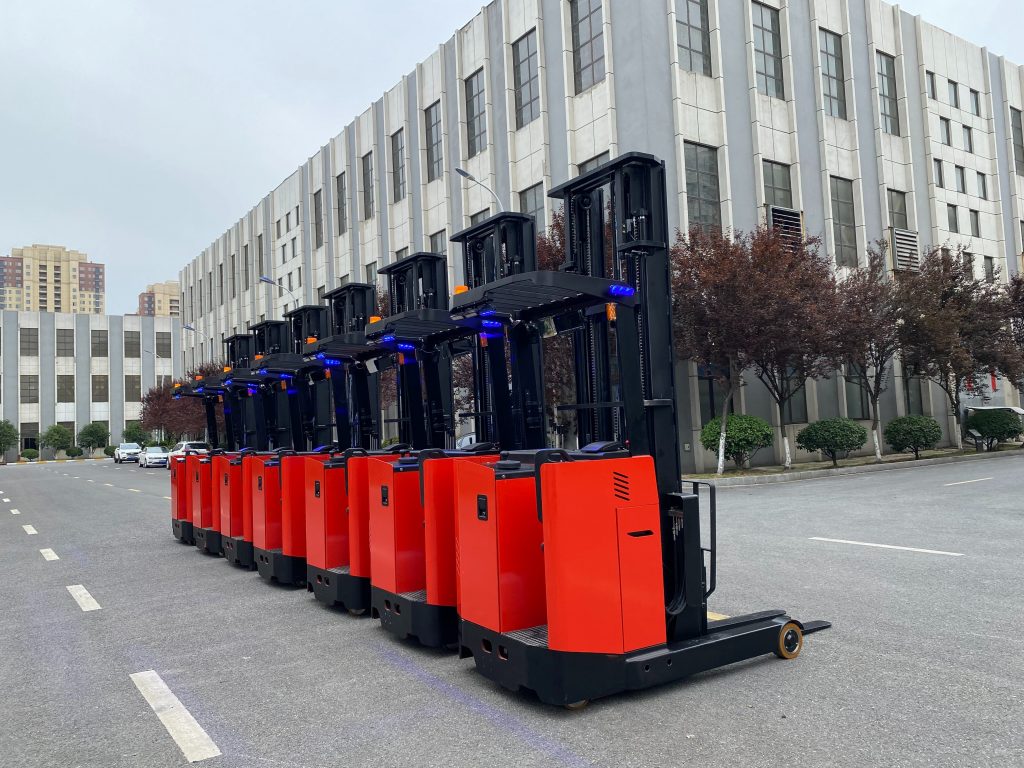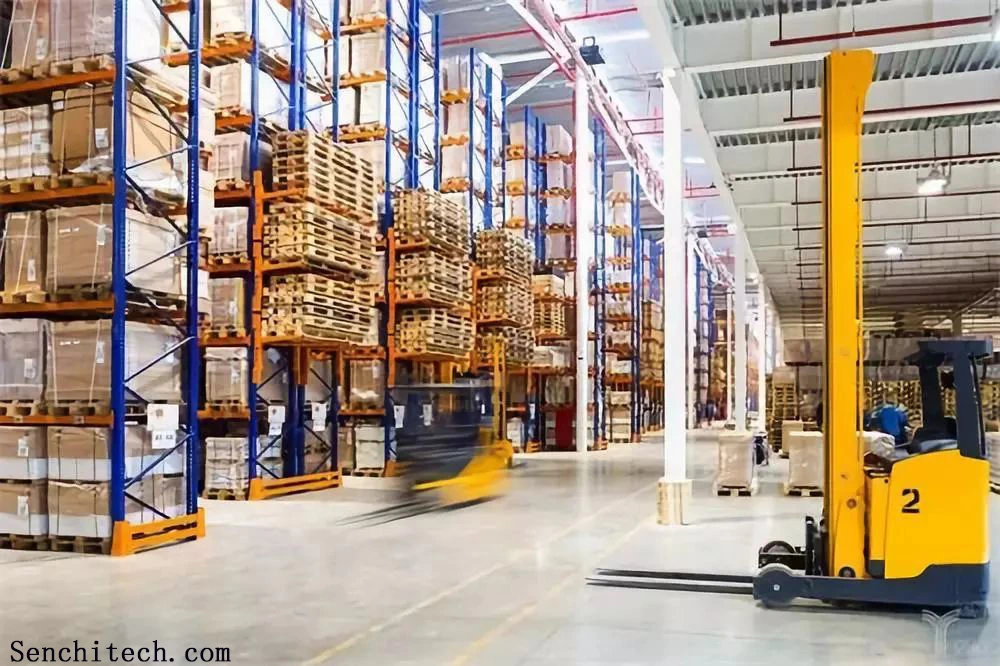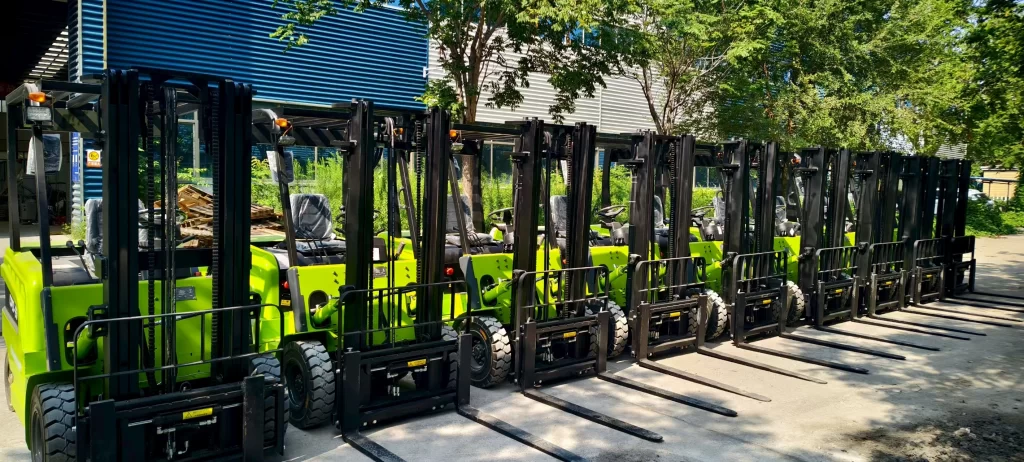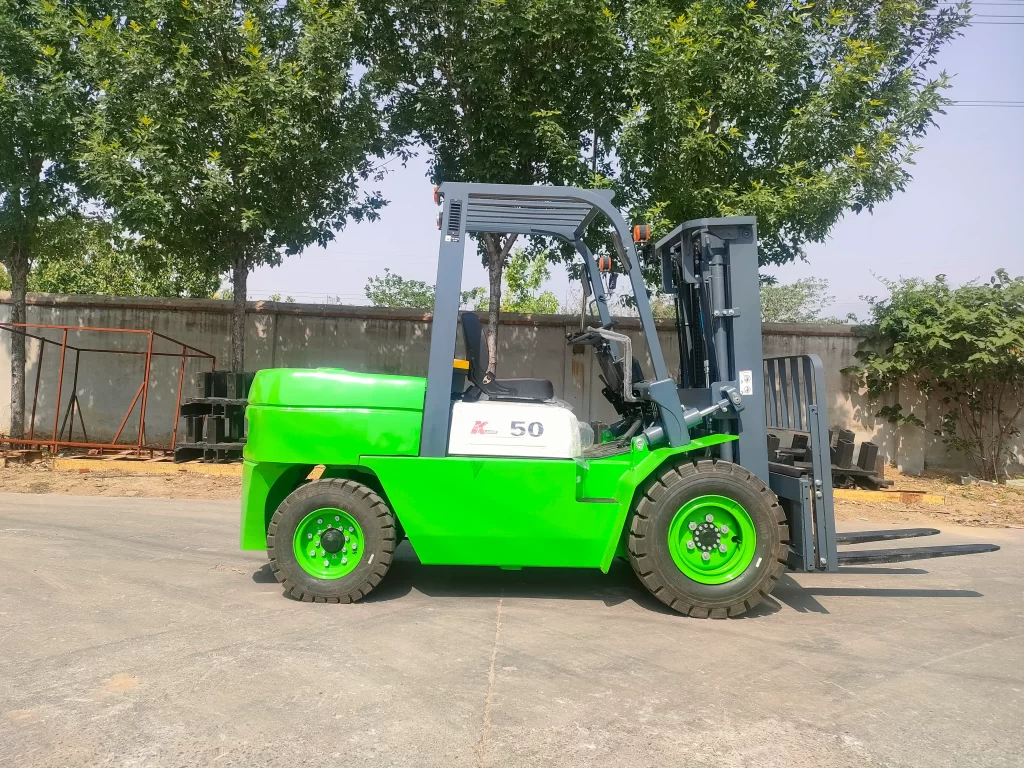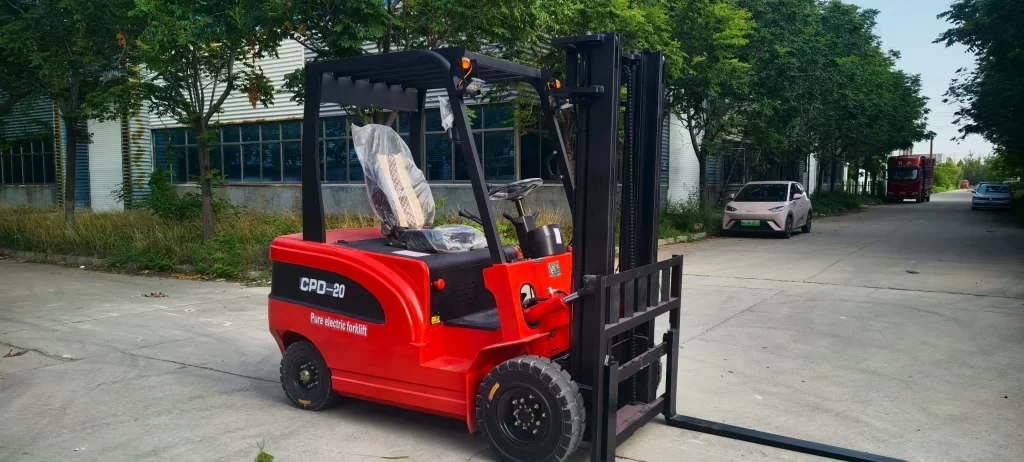Is a reach truck a stand-up forklift?
In the logistics industry, there are two types of electric forklifts for material handling, sometimes confusingly distinguishing between them. For example, reach trucks and stand-up forklifts. So how do you distinguish between the two? A reach truck is a type of stand-up forklift, but they are not all stand-up forklifts. Both are electric forklifts used for material handling in warehouses and logistics centers.
What is a reach truck?
A reach truck is a type of indoor warehouse handling vehicle. It is a forward-moving wheeled transport vehicle used for loading, unloading, stacking, and short-distance transportation of palletized goods. This industrial vehicle is often used for transporting and stacking stored items in warehouses. It typically uses DC power to drive a motor and hydraulic system to move and lift goods. A “reach truck” in a warehouse generally refers to an electric forklift with forks that can extend and retract to pick up goods. These vehicles are environmentally friendly, quiet, maneuverable, and have a small turning radius, significantly improving space utilization and work efficiency. They are also available in stand-up and sit-down versions. How a reach truck works: The mast or forklift of a reach truck can move forward and backward. A reach truck with a mast drives the forks forward, extending beyond the front wheels to pick up or place cargo. The forks retract with the cargo during travel, keeping the cargo’s center of gravity within the support surface. A reach truck with a forklift, on the other hand, uses a rack to drive the forks forward, extending beyond the front wheels to perform operations. The forks retract within the support surface during travel. After picking up cargo, the mast rises to a certain height and then returns to its original position along tracks on the inside of the outriggers, keeping the cargo’s center of gravity within the vehicle’s front and rear support legs. This provides excellent stability and is suitable for operations in confined spaces such as workshops and warehouses.
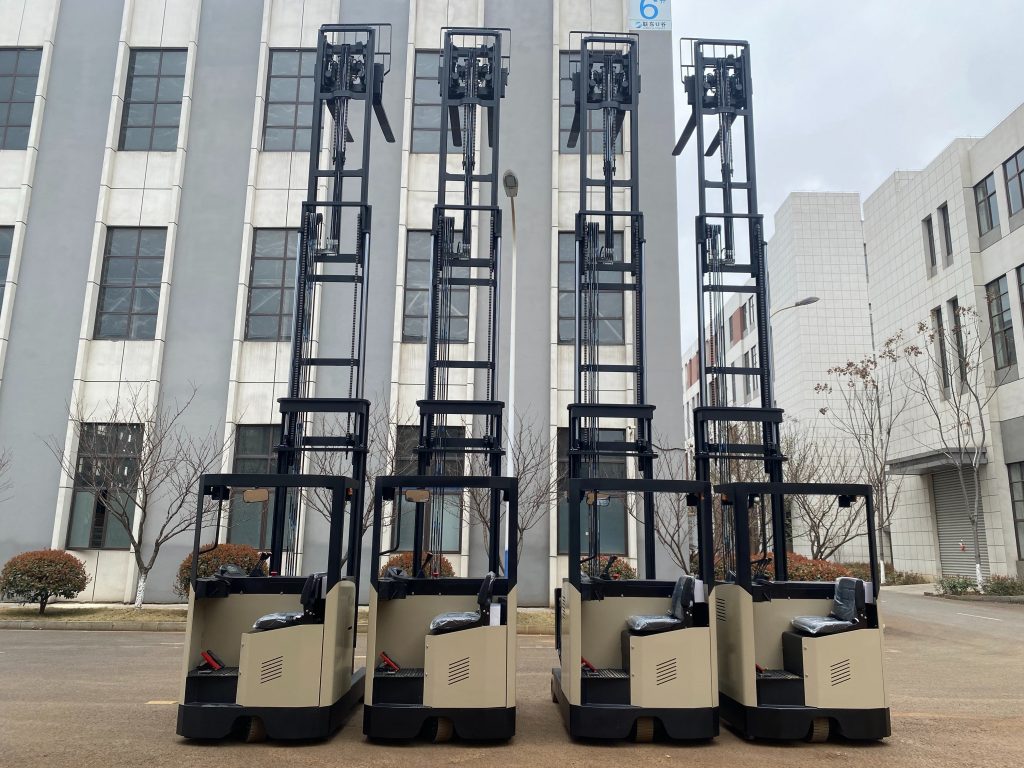
Forks
The fork is the most basic and commonly used lifting mechanism on a forklift. A typical forklift is equipped with two identical forks. It is an L-shaped member consisting of a horizontal section and a vertical section. The horizontal section is used to pick up cargo, while the vertical section connects to the fork frame. Typically, the horizontal and vertical sections of a fork are integrated into a single unit, known as an integral fork.
Reach Truck Mast System
The mast system of a reach truck consists of inner, middle, and outer masts. Each mast is a frame structure, welded together with left and right columns and upper and lower crossbeams. The structure has a sufficiently large cross-section to support the weight of the cargo and fork frame. To ensure rigidity, an intermediate crossbeam is welded to the rear of each mast level.
The outer, middle, and outer masts are shown in the figure.

Our reach trucks feature the following:
- Wide-angle view, high-strength shock absorption mast
- USA Curtis brand drive control system
- South-central transmission
- Electronic steering, portability, mute
- Shimadzu brand low-noise hydraulic pump and valve
- AC drive, no carbon brush, maintenance-free motor
- Electromagnetic regenerative braking system
- High and low voltage limits, electric overheat protection
- Large-capacity battery
- Circuit fault detection, error code diagnosis
- Controller with multiple automatic protection systems
- Inductive safety seat
- Cylinder safety shut-off valve
- Automatic deceleration in corners
We are a professional reach truck manufacturer and support customization.
Optional features:
- Thumb switch
- Height preselection
- LED headlight
- Optional lithium battery
- Additional wireless monitoring system
- Cold storage model
- Customized H-Shape Steel mast
What is a stand-up forklift?
A vertical forklift, also known as a stand-on forklift or electric forklift, is a compact material handling vehicle where the operator stands on the platform during operation. These electric forklifts are designed for narrow aisles and high-density warehouses, emphasizing maneuverability and a tight turning radius. They come in many different styles, primarily the following:
Stand-up electric stacker
This type of stacker is a type of stand-up electric forklift. Its mast and forks can extend and retract like a reach truck. It is also known as a portable reach truck. However, some are fixed, with only an ascending and descending function.
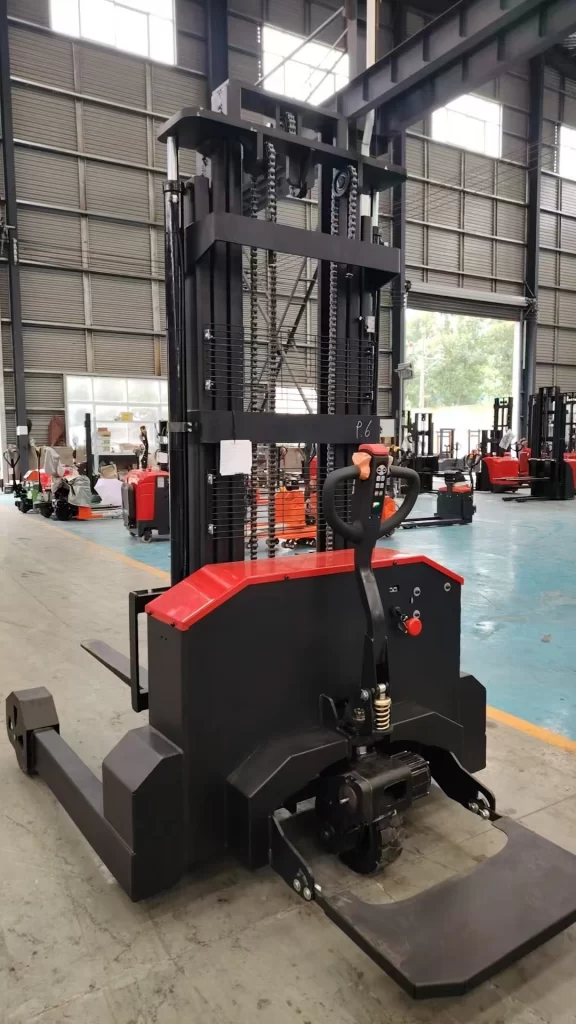
Side-standing counterbalanced stacker
Side-standing counterbalanced stacker is a type of counterbalanced electric forklift. We also use the American brand CURTIS controller, along with larger wheels and batteries, and offer custom designs.
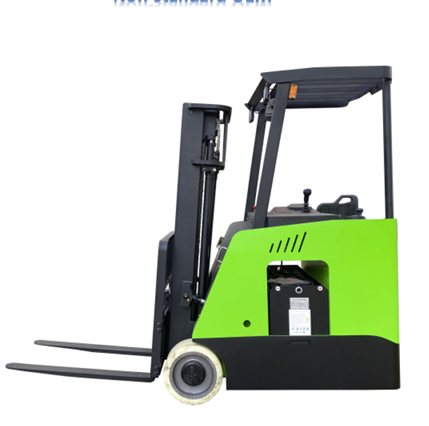
Where are stand-up forklifts most commonly used?
Stand-up forklifts dominate high-density warehouses where fast, repetitive lifting movements are required. They are well-suited for cross-docking, food/beverage refrigeration, and e-commerce fulfillment centers with limited floor space.
Stand-up forklifts are particularly well-suited for environments where frequent unloading and unloading is required, such as distribution areas at loading docks. Its open design allows operators to quickly enter and exit the vehicle to adjust pallets or inspect cargo.
FAQ
Can reach trucks or stand-up forklifts be used outdoors?
Not recommended—most models lack weatherproofing. Most electric forklifts are not suitable for outdoor use, especially in rainy weather. Even light rain can seep into the electrical system and cause a short circuit.
What is the lifespan of a reach truck? What is the battery life?
The vehicle can last for over 10 years, and the battery for at least five years.
Are stand-up forklifts cheaper than reach trucks?
Yes. However, stand-up electric forklifts have a limited lift height, while reach trucks can reach over 12 meters. This makes them a more practical tool for warehouse workers who prioritize space efficiency.
